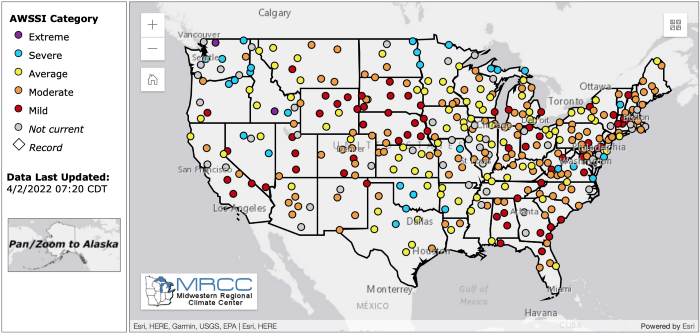According to meteorologist Barb Mayes Boustead, the Accumulated Winter Season Severity Index, or AWSSI (pronounced like “Aussie”), which she developed, tallies a “score” throughout the winter season based on temperatures, snowfall, and snowpack on the ground. According to this year’s map, most of the Southeast was categorized as mild or moderate, with limited winter weather. But this was a disadvantage for many of our fruit farmers this year, because we had just enough cold air to accumulate sufficient chill hours for the blueberries and peaches to set flowers. And then the warm January weather sped up the blooming of the orchards, just in time for several frosts to severely affect them. So while the winter as a whole was mild from the standpoint of AWSSI, it was very hard on fruit farmers who had to deal with the impacts of those cold outbreaks at key times in the production cycle of their crops. It just shows that both climate (AWSSI) and weather (freezes) are important in determining impacts on production. You can read more about this mild winter here or get more information about AWSSI at https://mrcc.purdue.edu/research/awssi/indexAwssi.jsp.
